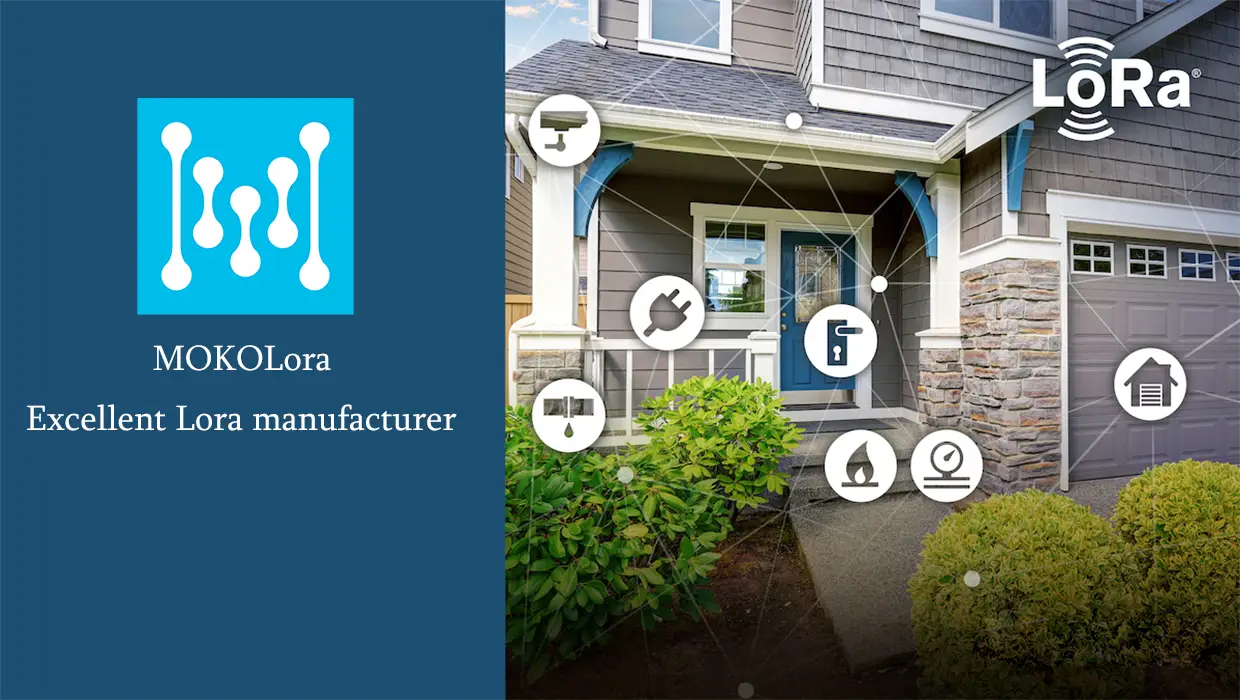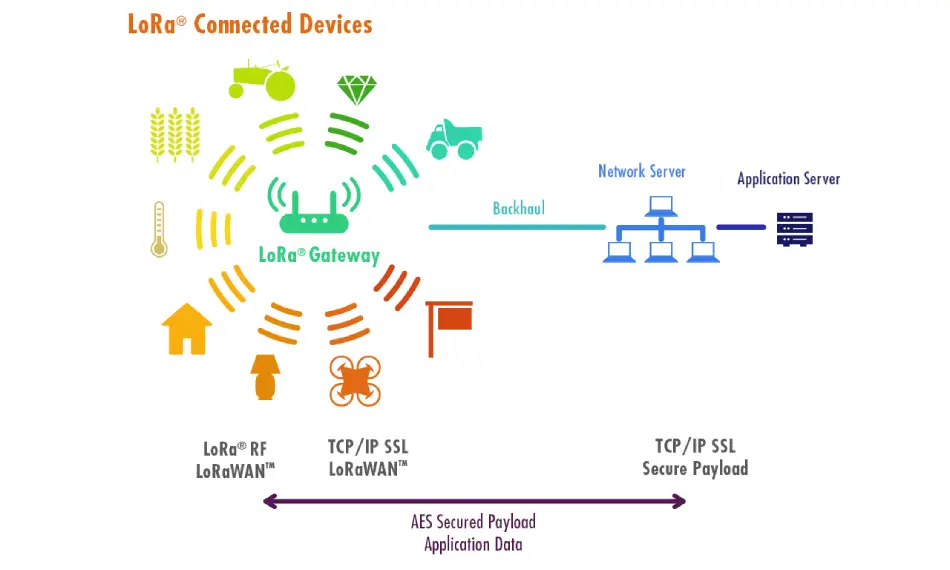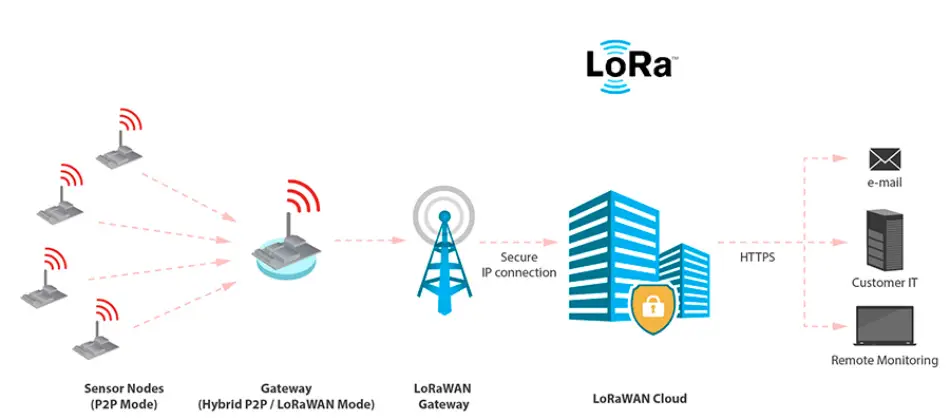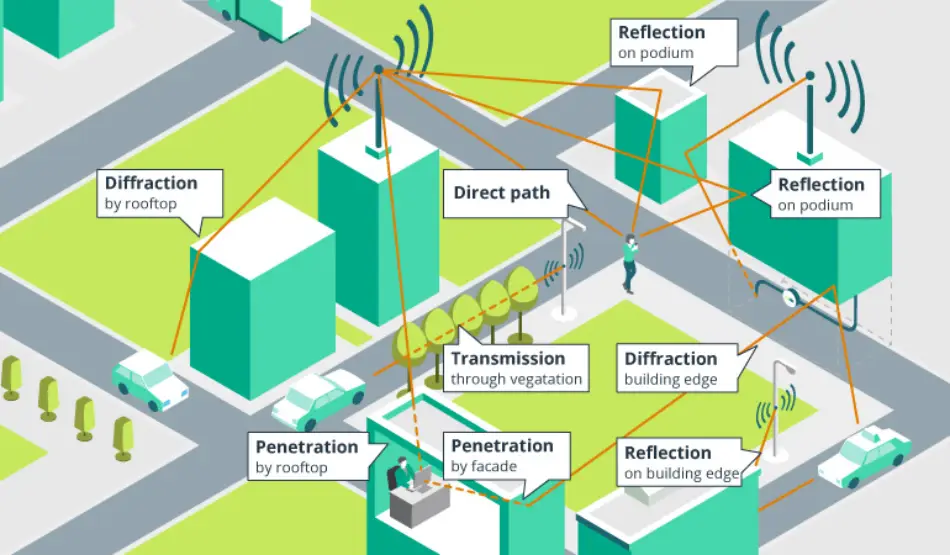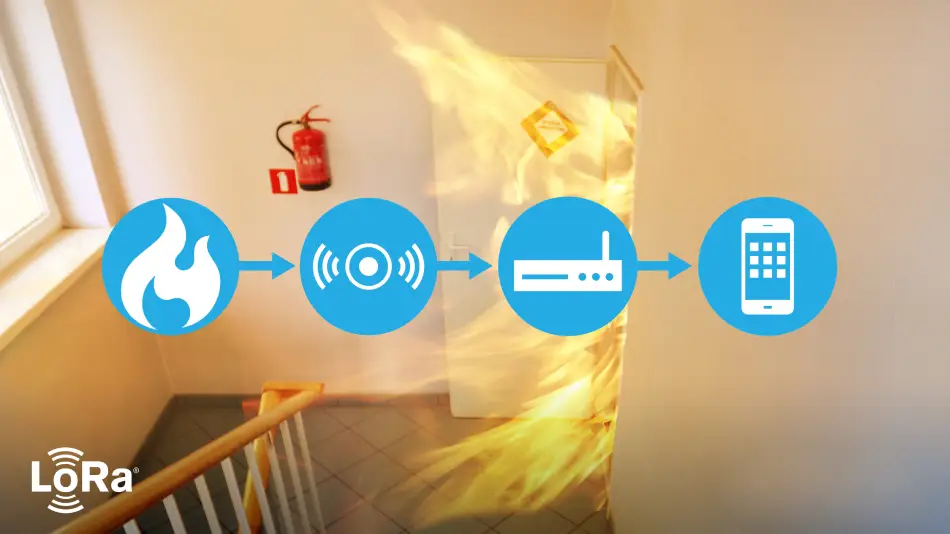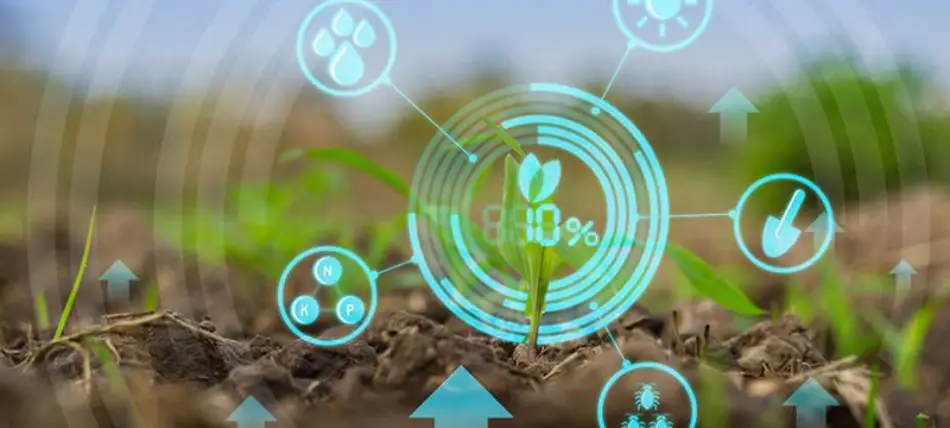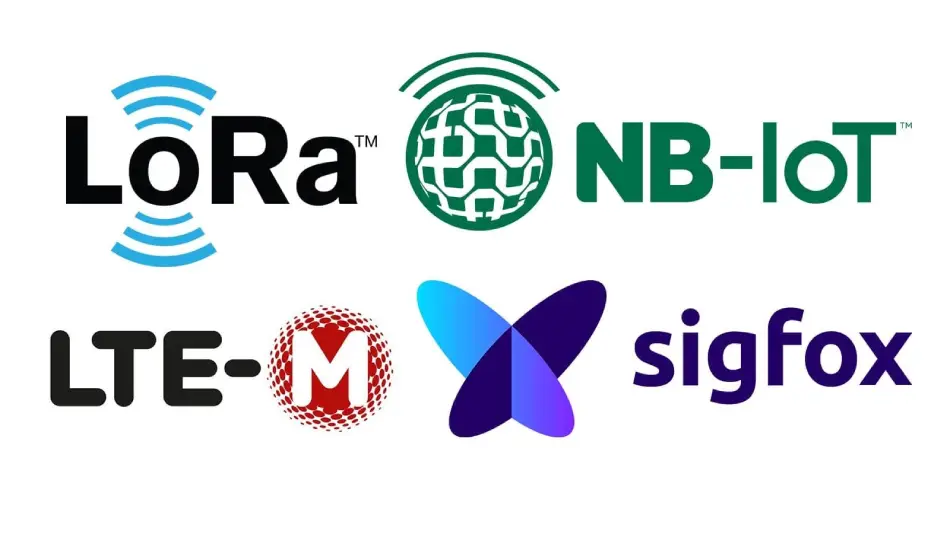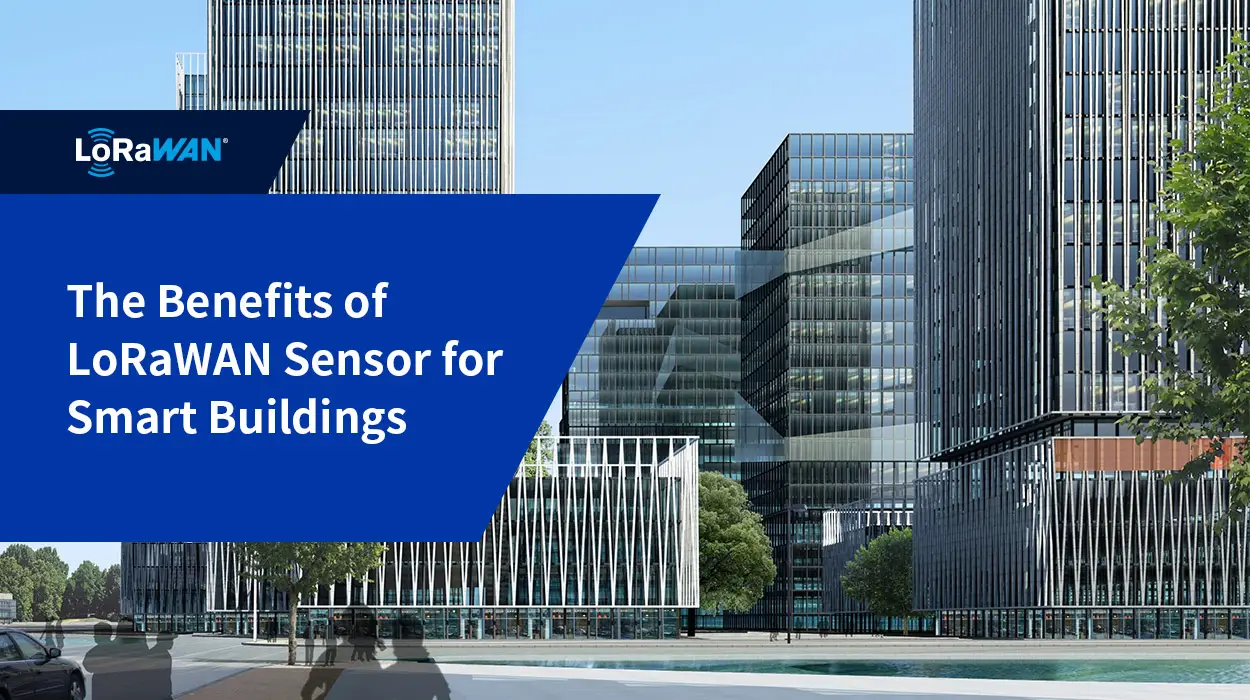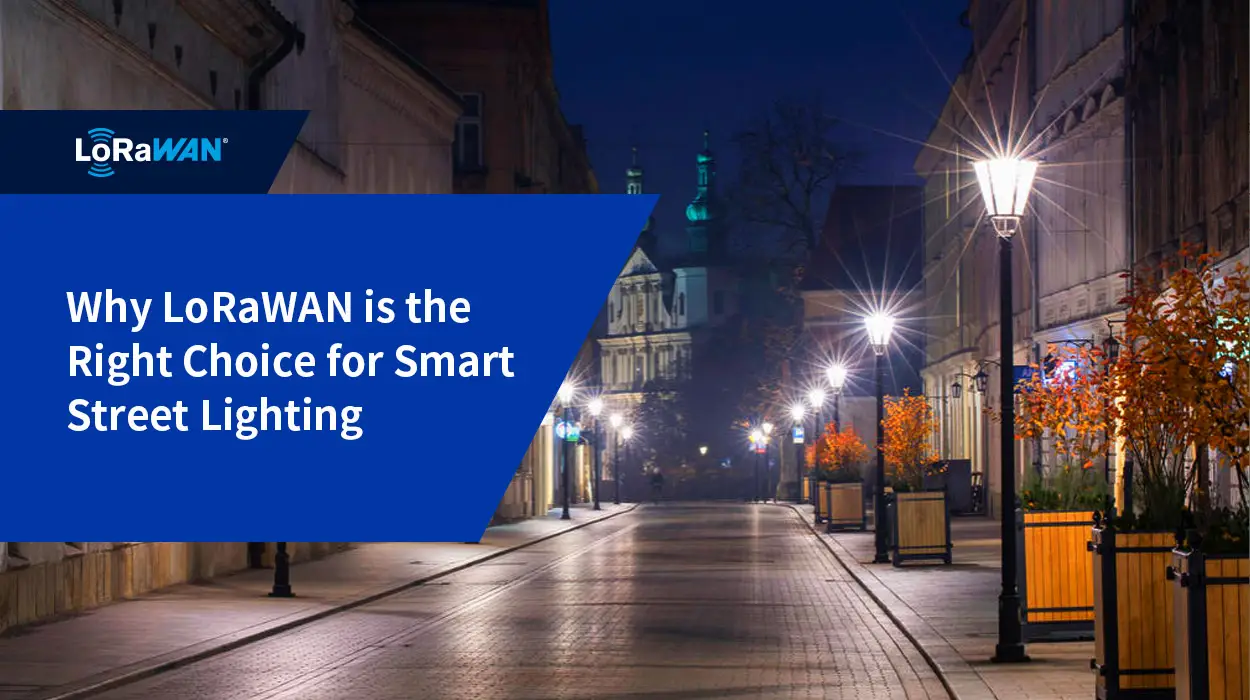There are many technical solutions for the endpoint Netcom transmission technology of the Internet of Things. Well-known wireless connectivity technology solutions include NB-IoT, LoRa, WiFi, Bluetooth, ZigBee, Sigfox, and sub-GHz. Different communication technologies have different characteristics and respective application scenarios. Among them, LoRa and NB-IoT are the most used and most concerned in IoT application scenarios. LoRa IoT technology can achieve long-distance, low-power data transmission, which cannot be fully satisfied by other IoT communication technologies. This is also the original intention of LoRa IoT technology. LoRa IoT technology is suitable for scenarios with a wide range, a small amount of data, and low timeliness. To build IoT applications and IoT systems, you must carefully understand the purpose, requirements, and environment of the application scenarios. Only a detailed and objective understanding of the requirements and the environment can correctly determine the transmission technology. Choosing a vendor that can manufacture IoT devices with multiple protocols can make your IoT project go much more smoothly.
LoRa, what exactly is it?
LoRa is a low-power WAN transmission technology, mainly used in the Internet of Things. LoRa is the abbreviation of long-range, and long-range is also the core advantage of LoRa, with a long transmission distance of over 15 km in open areas.
As one of the LPWAN communication technologies, LoRa is an ultra-long-distance wireless transmission scheme based on spread spectrum technology. LoRa is based on linear frequency modulation spread spectrum, which not only maintains the low power consumption characteristics of signal spectrum modulation but also significantly increases the communication distance. LoRa IoT technology has high sensitivity and a strong signal-to-noise ratio. The emergence of LoRa can well solve the application scenarios of long-distance, low-power, and small-signal transmission in the Internet of Things. LoRa has unparalleled performance and is widely used in the Internet of Things era.
Introduction to the Internet of Things
The Internet of Things (IoT) refers to devices and technologies that connect things to a network. Objects by themselves cannot perceive changes in the environment. Various IoT devices need to be installed on objects, such as information sensors, laser scanners, radio frequency identification devices, temperature and humidity sensors, etc. After these data are collected, they are transmitted to the cloud server or center for processing. After the server processes the data, it will give feedback based on the information. Objects are connected to objects and servers through sensors, network devices, and gateways to realize intelligent perception, recognition and management of objects and processes. The Internet of Things is an information carrier based on the Internet and traditional telecommunication networks. It allows all common physical objects that can be addressed independently to form an interconnected network.
Introduction to LoRa IoT
LoRa IoT refers to connecting objects to the network through LoRa modules, gateways, and other devices. LoRa IoT is to transmit various required information collected by various sensors and end devices such as sensors to network nodes and servers through the LoRa system. The terminal device can also react according to the information sent by the server or other terminal device. The connection of the LoRa IoT system is bidirectional.
Advantages and disadvantages of the LoRa IoT system
Advantage: LoRa IoT network has the characteristics of long transmission distance, low working power consumption, many network nodes, strong anti-interference ability, and low cost.
- Long transmission distance: sensitivity -148dBm, communication distance up to 15 kilometers
- Low working energy consumption: Aloha method only connects when there is data, and the battery can work for several years
- Multiple network nodes: In flexible networking mode, multiple nodes can be connected
- Strong anti-interference: The protocol has the function of LBT, based on the Aloha method, with automatic frequency jump and rate adaptation functions
- Low cost: unlicensed spectrum, low node/terminal cost
Disadvantages: LoRa IoT network has many advantages, but it also has certain disadvantages.
- Spectrum interference: With the continuous development of LoRa, LoRa equipment, and network deployment continue to increase, and certain spectrum interference will occur between each other.
- Need to build a new network: During the LoRa deployment process, users need to build their own network.
- Small payload: The payload of LoRa transmission data is relatively small and has a byte limit.
Practical applications of LoRa IoT
In recent years, LoRa’s wireless technology has become more and more mature and has gradually pieced together a complete IoT application ecosystem. In order to promote the Internet of Things and build a smart city, the Taipei City Government has also caught up with the development trend of this technology. Through LoRaWan technology, an IoT experimental platform has been deployed to solve the needs of citizens with smart solutions. In addition to the smart city solutions vigorously promoted by the Taipei City Government, the application scenarios suitable for LoRa IoT also include the following types:
Smart building
Traditional construction equipment cannot meet people’s pursuit of higher quality of life, and building intelligence has become an inevitable trend. Building intelligence requires adding various IoT devices to buildings. These IoT devices can add sensors according to their needs, such as temperature sensors, humidity sensors, air quality sensors, etc. The information collected by these sensors is periodically transmitted to the supervisor or automatic processing system. The supervisor or automated processing system will adjust the air conditioner temperature and indoor humidity according to the data to improve the indoor air. The long battery life of LoRa is well reflected here.
Smart Fire
Firefighting work is divided into fire prevention and fire fighting, both of which have high requirements for time. Now with global warming and a dense population, people have higher and higher requirements for fire fighting. Fire prevention is not only to prevent fire but also to quickly find the fire point and extinguish the fire before the fire occurs. Fire prevention in the forest is more difficult than other fire prevention. There is no electricity in the forest, and the forest area is large. When there is a small fire area, it is difficult to find the fire location. LoRa IoT fire prevention system can solve this problem very well. LoRa has a large transmission area, low power consumption, and long battery life. It can monitor the situation of the forest in real-time and extinguish the fire in a very short time. When a building is under fire, LoRa transmits the fire situation to the fire department for the first time through wireless transmission technology, and LoRaWAN smoke detectors can plan a safe escape route for indoor escape personnel to reduce the harm caused by fire.
Smart agriculture
Agriculture is a cost-sensitive industry. LoRa IoT devices cost less than other IoT devices, and LoRa’s wide transmission range means fewer devices should be deployed on farms and pastures, further reducing operating costs. The LoRa IoT device collects various growth environment information through sensors such as temperature, humidity, acid, and others, and then periodically transmits this information to the cloud server. Based on these data, farmers can determine whether it is time for watering and fertilizing, which reduces the consumption of water resources and improves the yield of crops.
Logistics tracking
Now the logistics industry is more and more developed, and there are more and more logistics transportation and logistics warehousing. The development of logistics enterprises depends on the quality of logistics management and logistics tracking. When goods are transported by truck, it usually takes a long time and a long distance. The battery life of the tracking or locating device and the distance the signal travels will become very important. During the process of locating the goods in real-time, the battery cannot be powered off. In order to maintain the battery life, LoRa IoT technology is characterized by a complex intelligent logistics system. Logistics companies can place LoRa tracking devices in appropriate positions according to warehouse distribution and transportation routes, and truly master the transportation situation of items. For enterprises, it can improve the efficiency of enterprise transportation, understand the transportation of goods, and reduce the loss of goods; for consumers, they can truly grasp the transportation location and approximate arrival time of the goods, and reasonably arrange the time to receive express delivery.
Summary of LPWAN technology
The goal of LPWAN technologies is a long-distance wireless network communication technology optimized for M2M (device-to-device) communication scenarios in IoT applications. The advantages of LPWAN technology are mainly reflected in low speed, ultra-low power consumption, long distance, low throughput, and strong coverage. These characteristics just show that this technology is developed for the scenario of long-distance transmission of the Internet of Things. Specific applications include urban coverage, remote meter reading, manhole cover inspection, and offshore fishing vessel inspection.
As a new technology camp, LPWAN is divided into two major factions: authorized frequency band and unlicensed frequency band. Licensed frequency bands are divided into EC-GSM, eMTC, and NB-IoT; the “top card” of unlicensed frequency bands is LoRa.
EC-GSM
With the rise of LPWAN, the disadvantages of traditional GRPS applied to the Internet of Things become more and more obvious. In 2014, the 3GPP research project proposed to migrate narrowband (200kHz) Internet of Things technology to GSM, seeking a wider coverage range 20dB higher than traditional GPRS, and proposed five goals: improving indoor coverage performance, supporting large-scale device connections, reducing equipment complexity, power consumption, and time delay. By 2015, the TSG GERAN #67 meeting report stated that EC-GSM has met five major goals. But with the freezing of the R13 NB-IoT standard, people put more energy into the redefined standard.
eMTC
The concept of eMTC is officially named in R13. The previous R12 is called Low-Cost MTC, which is an IoT technology based on LTE evolution. eMTC is deployed based on a cellular network, and user equipment can directly access the existing LTE network by supporting 1.4MHz radio frequency and baseband bandwidth. The key capabilities of eMTC are high speed (compared to GPRS, Zigbee, etc.), mobility, location, and support for voice.
NB-IoT
NB-IoT, which is particularly hot recently, is actually the integration of NB-CIoT and NB-LTE. NB-CIoT proposes a brand-new air interface technology, which is more modified than the traditional LTE network. It satisfies the five goals proposed at the TSG GERAN#67 meeting. Its highlight is that the cost of communication modules is lower than that of GSM and NB-LTE modules. The NB-LTE is compatible with the existing LTE and is characterized by easy deployment. After fierce controversy, the two were finally merged to form the technical standard of NB-IoT.
Comparison of LoRa IoT and NB-IoT
Based on cost considerations, the unit price of the LoRa module is about 8-10 US dollars, and there is no need to pay additional spectrum fees for unlicensed frequency bands. Compared with NB-IoT, it has significant advantages in cost. In terms of battery performance, since NB-IoT works on the cellular licensed spectrum, it needs to synchronize the network regularly, which will consume corresponding power. LoRa IoT does not have this concern, but this feature of NB-IoT is also warmly welcomed by shared bicycles. On this basis, the vehicle can be positioned in real-time. In addition, from the perspective of the business model, NB-IoT belongs to the network construction of telecom operators, and the business side does not need to consider the deployment of base stations by itself, which is more worry-free. But at the same time, the quality and security of the network are uncontrollable risks, and the value-added of enterprises themselves will also be hindered to some extent. LoRa, on the other hand, is a self-built enterprise network. Base stations need to be deployed by themselves, and follow-up operations, maintenance, optimization, etc. are required. Coverage points, network quality, and security are all their own responsibility.
So far, loRa IoT and NB-IoT have their own advantages and disadvantages and their respective application scenarios. No IoT technology is going to be truly mainstream. As far as technology itself is concerned, there is no absolute perfection. Starting from the business, it is even more necessary to combine business characteristics and business models to select a more suitable IoT technology. The development of IoT technology is accompanied by “heroes” from all over the world. We will wait and see whether there will be three parties or new powers to dominate the world in the future.
LoRa IoT market quotes
The era of the Internet of Everything is also the era when data is king. But in many cases, if smart objects do not have corresponding location information, it means that the data is “cluttered” and the usable value will be greatly reduced. With the vigorous development of the IoT industry in the past two years, the demand for positioning technology in various IoT application scenarios has also increased significantly. At present, there are dozens or even hundreds of positioning technologies, each of which has its own advantages and disadvantages and suitable application scenarios.
In contrast to the NB-IoT backbone network, LoRa is more likely to play a “WiFi” role in the future Internet of Things era. The Internet of Everything is an unstoppable trend in the future, and the foundation for the realization of the Internet of Everything is the need to connect tens of billions of physical terminals through various connection technologies. Due to the differences in the environment and the functional requirements of the network, the huge networked terminals must have various differentiated requirements for the communication network, which determines that the wireless communication market of the Internet of Things will be a situation where a hundred schools of thought contend.
Speaking of LoRa, many people will compare it with NB-IoT, because both are currently the most representative wireless connection technologies. But in fact, the connection between LoRa and NB-IoT is not a simple competition. If LoRa also has a network covered by operators in China, it can be understood as a competition relationship. But in fact, domestic LoRa does not have an operator’s network, and LoRa is more responsible for making up for NB-IoT, which is a relationship of mutual cooperation. The LoRa network mainly makes up for the NB-IoT network at two levels. The first level is to cover up the network in the physical space. In the future use of the Internet of Things, there are many uses that the operator’s network cannot cover, such as underground and remote mountain areas. It is more appropriate to deploy LoRa and other networks in these environments. The second level is the business level to make up for the complex and changeable business needs of IoT projects. Some IoT projects do not require a public network but expect to use a private network for connection, which is more in line with their own business interests whether for data security, budget, or other considerations. This level of business requirements is also the advantage of the LoRa network compared with NB-IoT.

